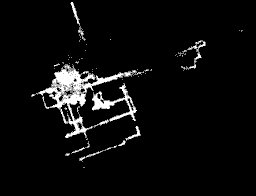 |
Science Frontiers ONLINE No. 92: Mar-Apr 1994 |
|
|
Diamonds are an anomalist's best friend
The diamonds we mine today were, according to prevailing wisdom, formed about 3 billion years ago, at depths of 150-300 kilometers, where pressures of 725,000-1,000,000 psi are believed to exist. After lengthy cooling periods, the crystalized diamonds were transported to the surface by fluid, lower-melting-point rocks, such as kimberlite. Many South African diamonds are mined from kimberlite pipes.
Diamonds are never pure carbon; they always contain some nitrogen and boron. Occasionally, they harbor tiny radioactive impurities; usually alpha-particle emitters in the uranium-238 decay chain. Alphas emitted by these impurities have well-defined energies and penetrate the diamond matrix only so far. If one examines a diamond with a high-power microscope (say, at 100 x), one can see concentric rings surrounding the impurities. These dark radiohalos or "pleochroic" halos have specific radii and can be used to identify the radioisotopes that produced them. So far, so good; but:
"The fact that fully formed, optically visible internal radiohalos in diamonds are now presented casts a considerable shadow over current theories of diamond genesis."
Actually, the radiohalos pose three challenges to diamond-genesis theory.
Problem 1. The half-lives of the halo-creating radioisotopes are measured in thousands of years rather than the billions prescribed for crystallization. In fact some of the half-lives are only minutes or days long. M.H. Armitage comments:
"How could these halos become imprinted if the formative cooling processes involved require such lengthy intervals?"
Problem 2. The radioactive impurities producing the radiohalos are very tiny -- about 2-4 micrometers in diameter -- and are highly concentrated. Armitage continues:
"What is most difficult to understand is that many of these inclusions and impurities have much lower melting and boiling points than the diamonds in which they are found."
Why did the impurities fail to disperse as the higher-melting-point diamond matrix surrounding them slowly cooled down the eons?
 Photomicrograph (100x) of hollow tubes in a diamond |
(Armitage, Mark H.; "Internal Radiohalos in a Diamond," American Laboratory, p. 28, December 1993. Cr. N. Ethridge.)
Comments. More on the radiohalo problem can be found in Science Frontiers (the book, p. 213) and under ESP1 in Anomalies in Geology. Ordering information for both of these books is located here.
Note, too, that creationists employ radiohalos to attempt to prove that the earth is really young. Finally, American Laboratory is one of the thousands of journals we have not examined. It is painfully obvious that, even with some 40,000 journal volumes reviewed, we have much farther to go!